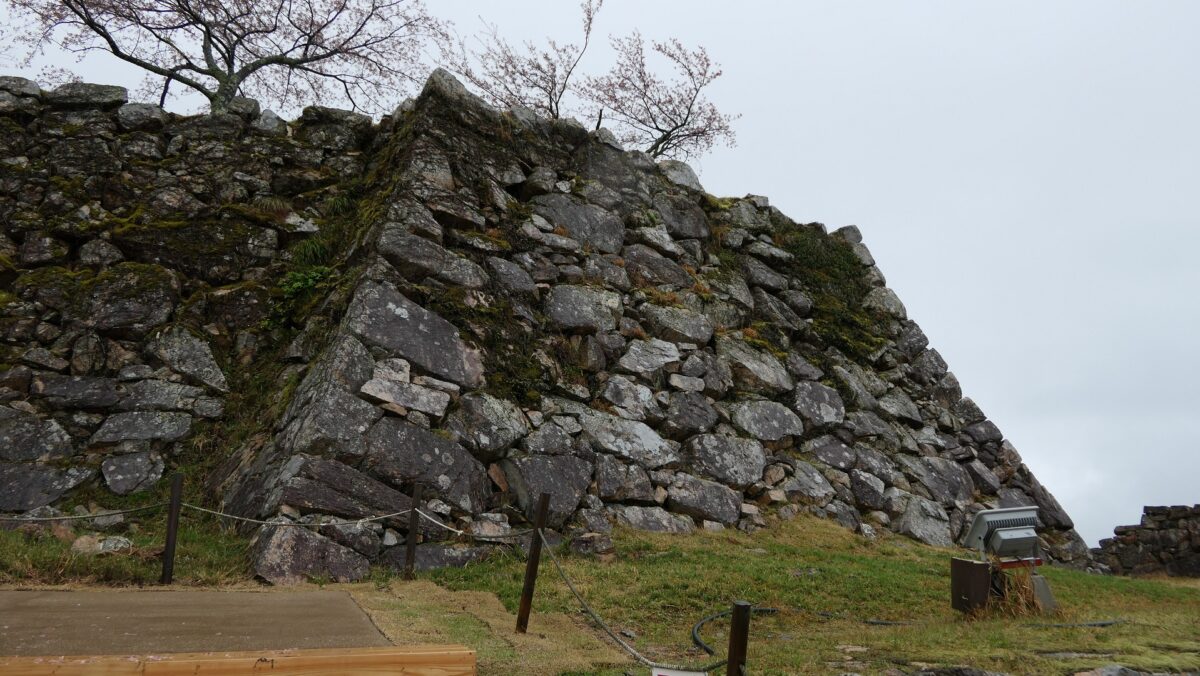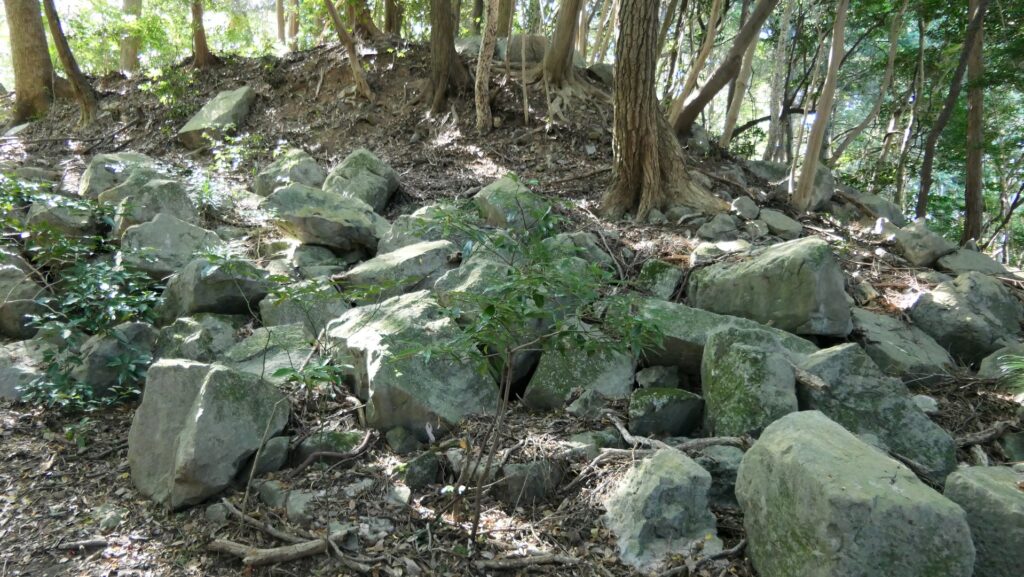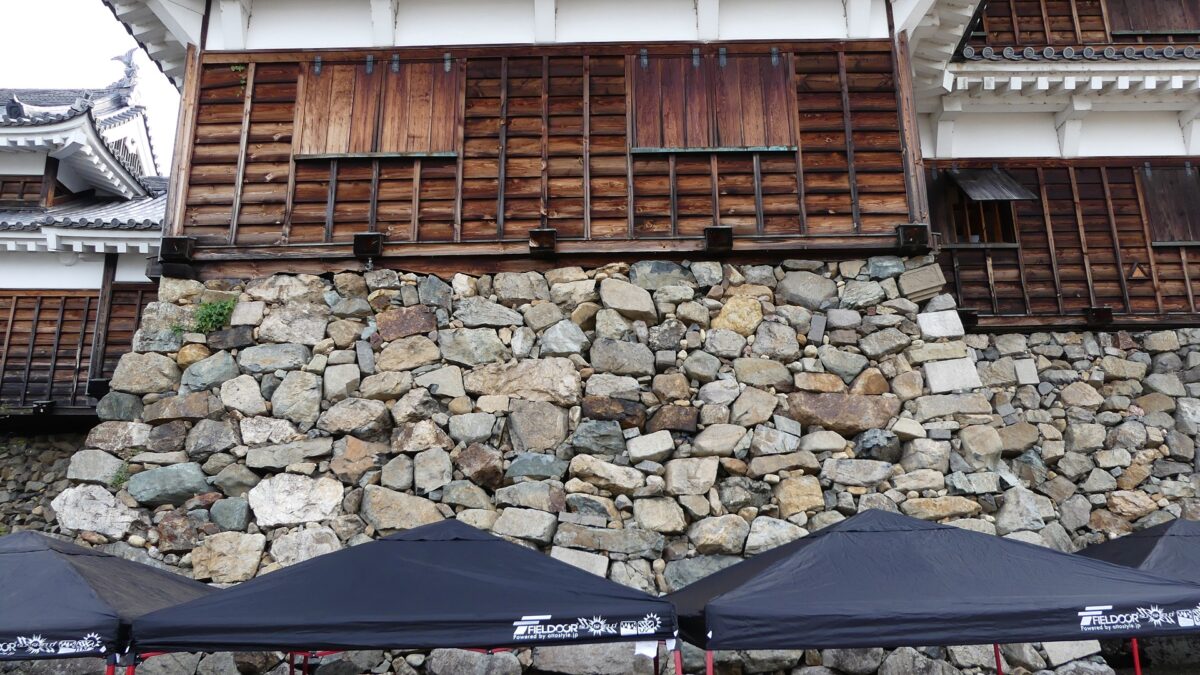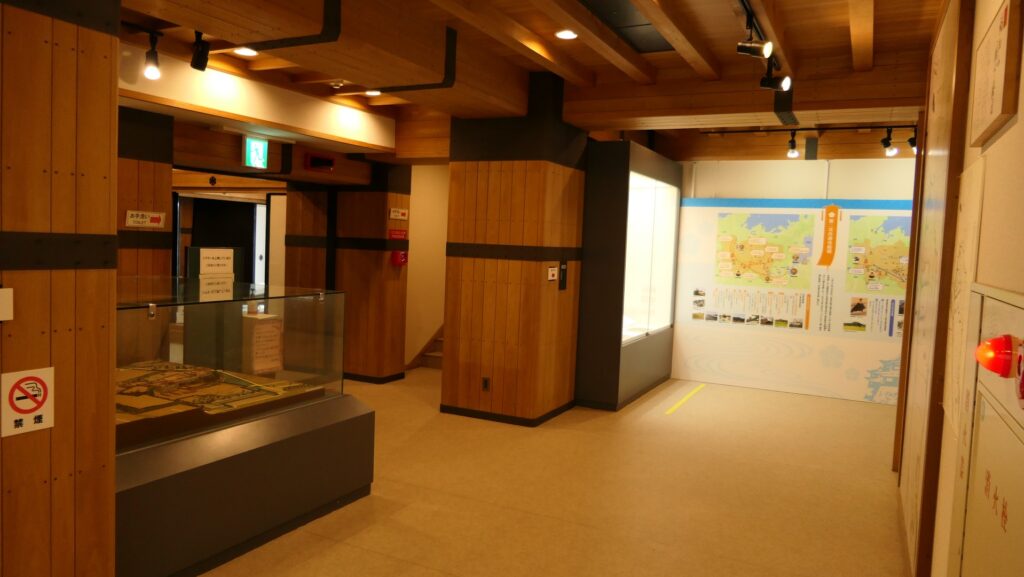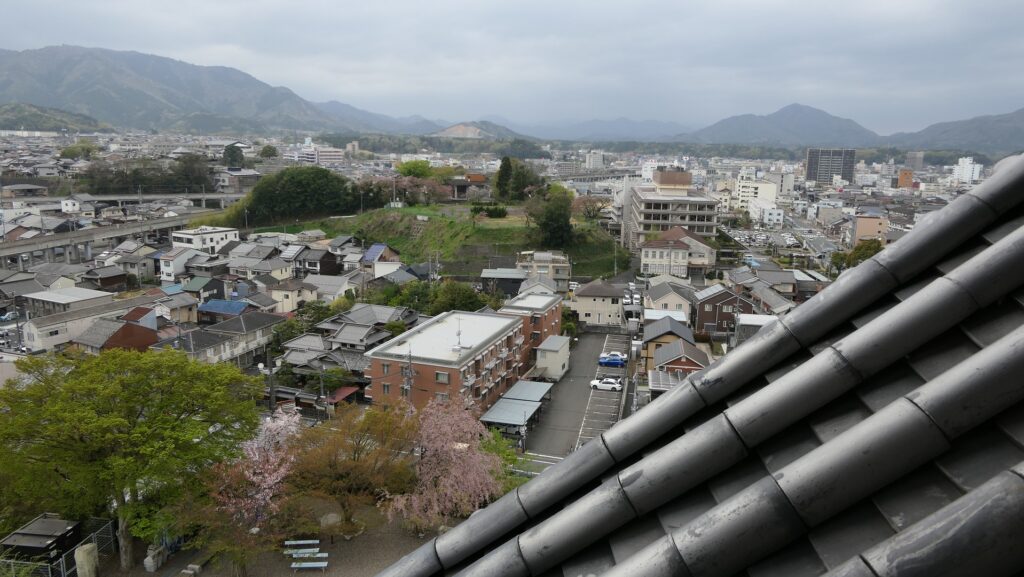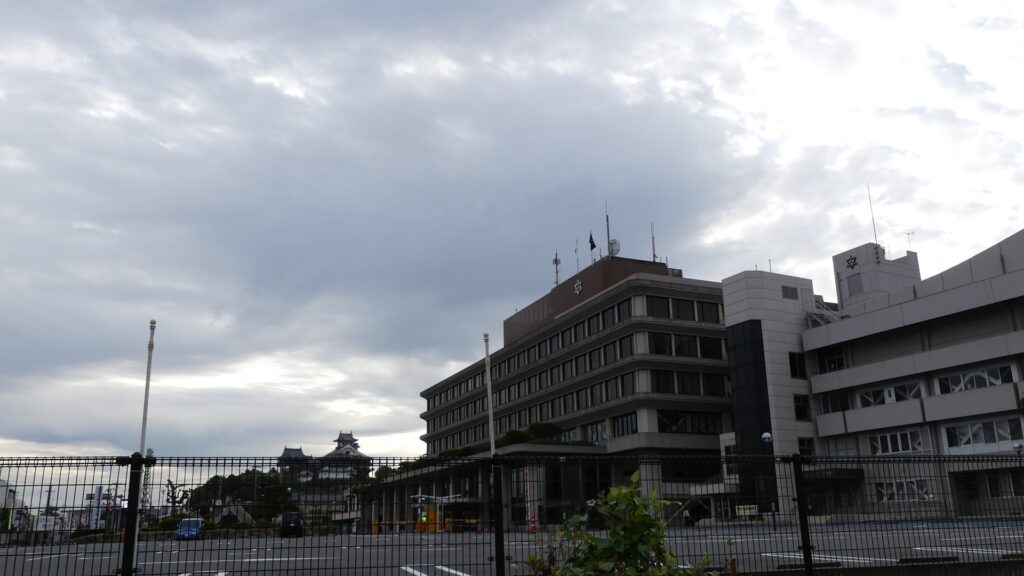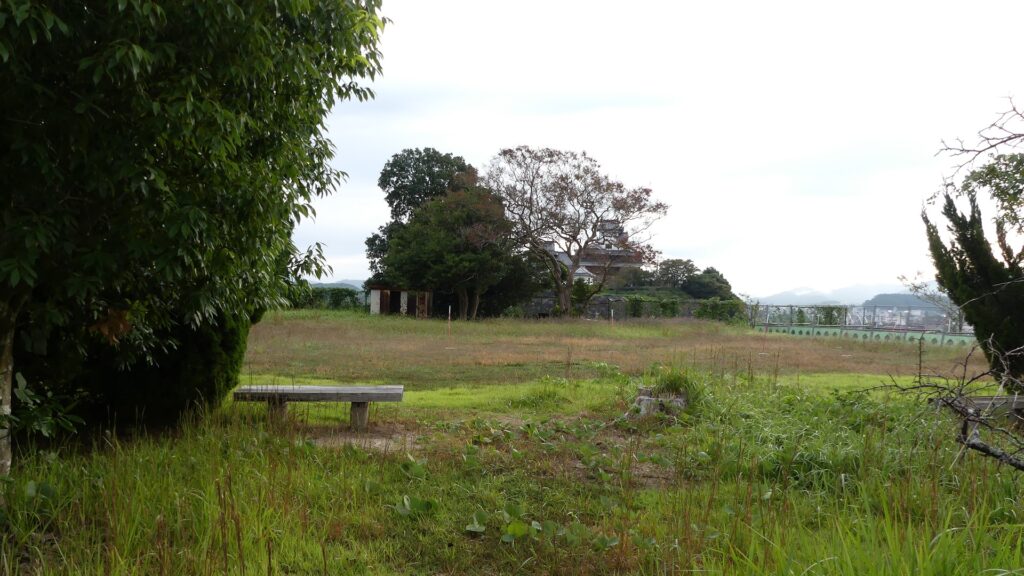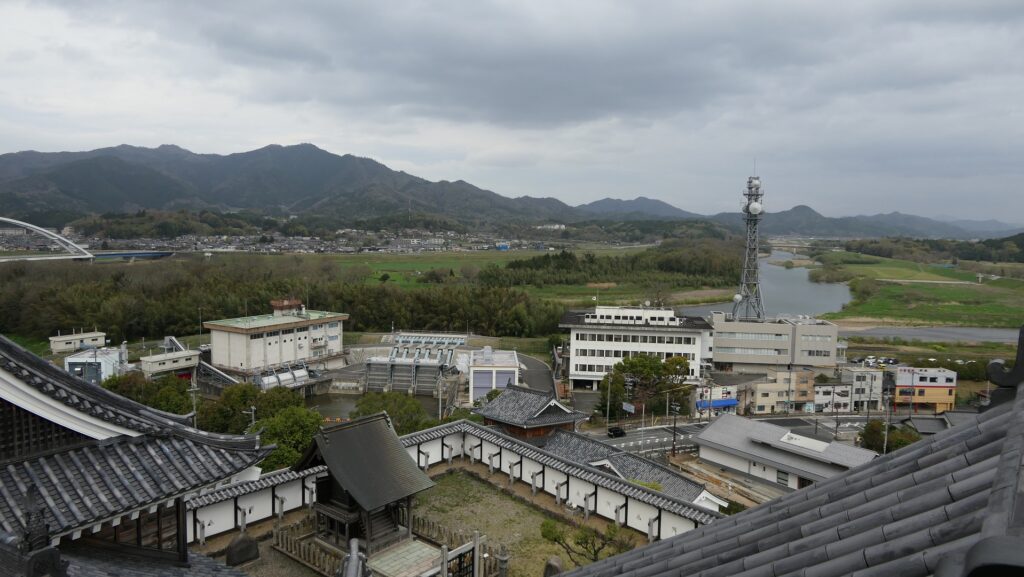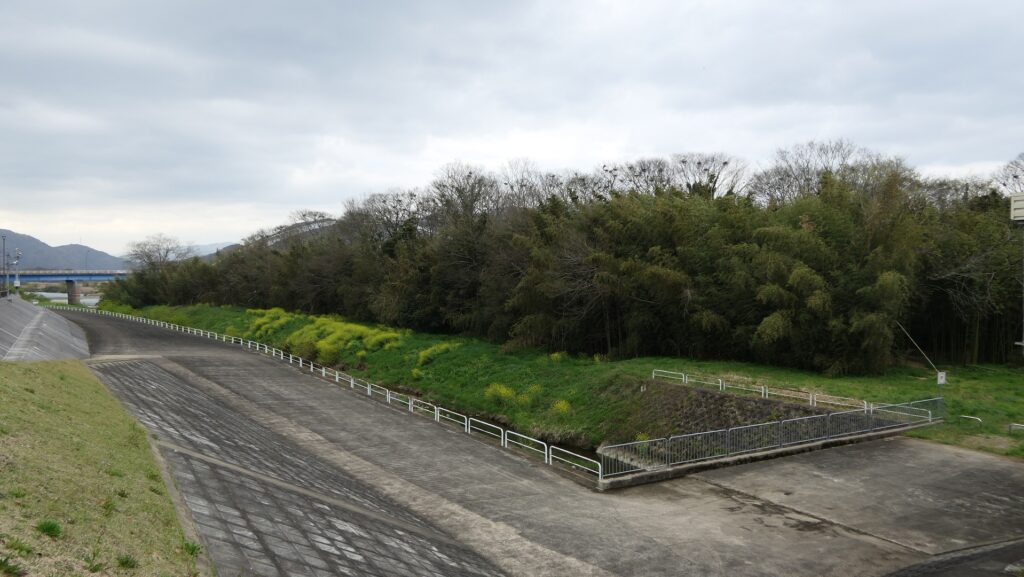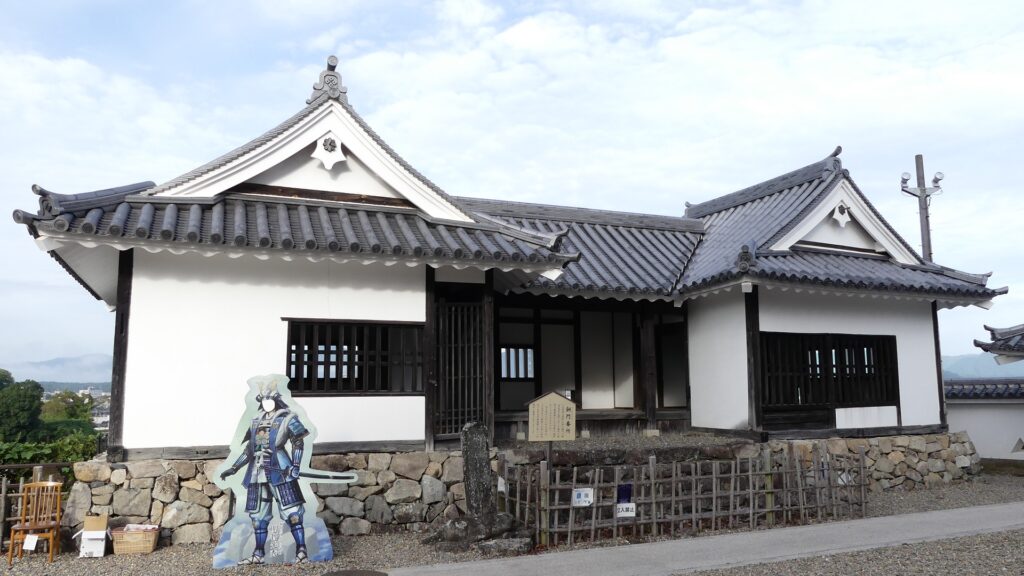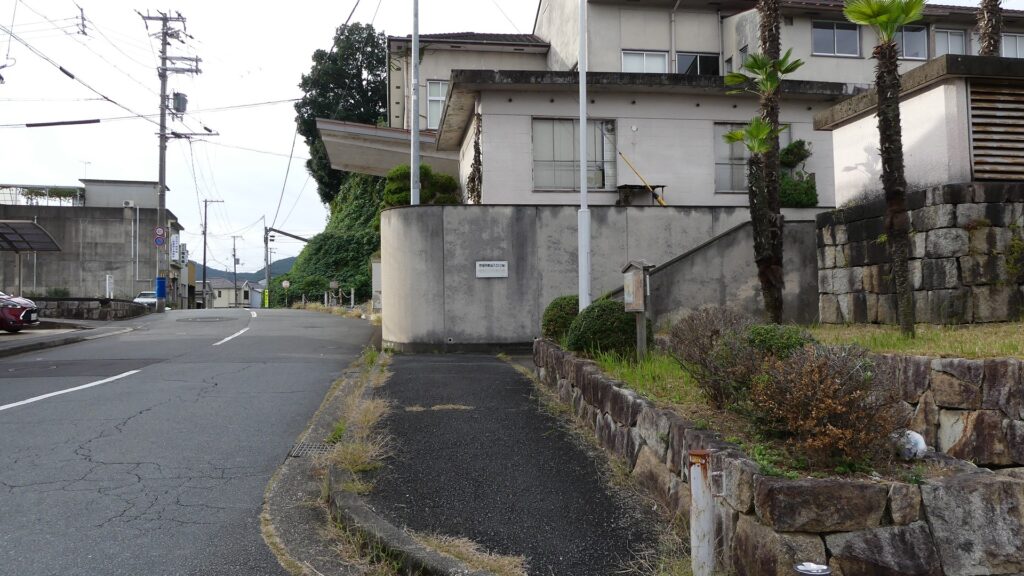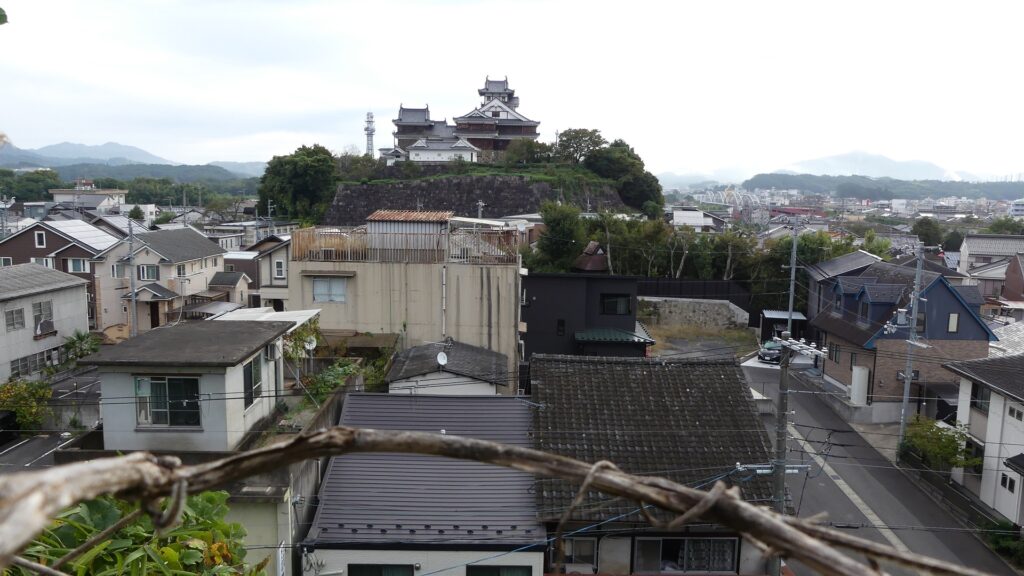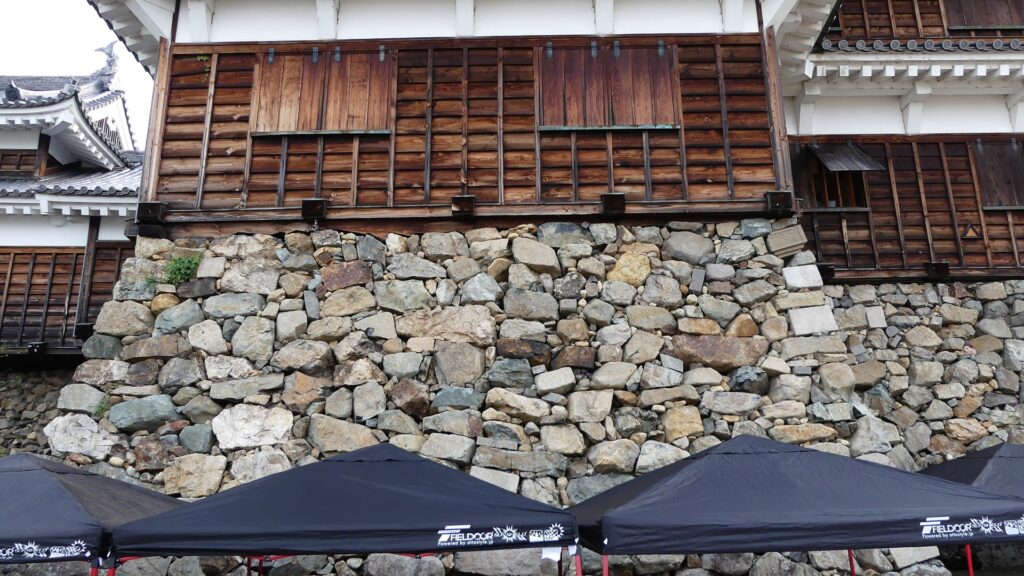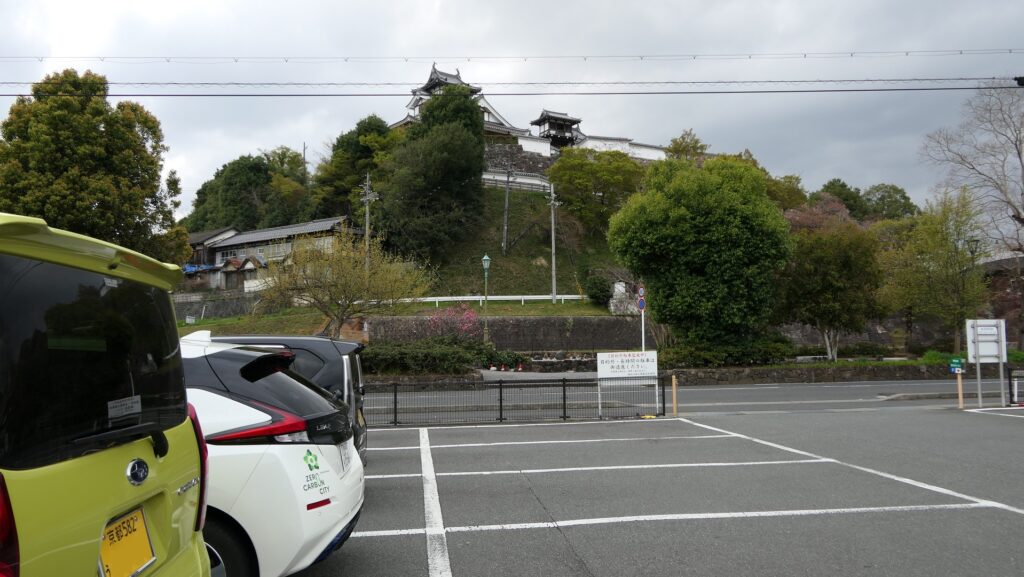Features
From Center of Castle to Southern Ridge
The western ridge from the center, called Hanayashiki or the Flower Residence Enclosure, does not usually not allow visitors to enter because of its preservation and the safety of visitors. The enclosure is built on the steeper ridge than the others, which is said to be built to protect the back route of the castle.
The map around the castle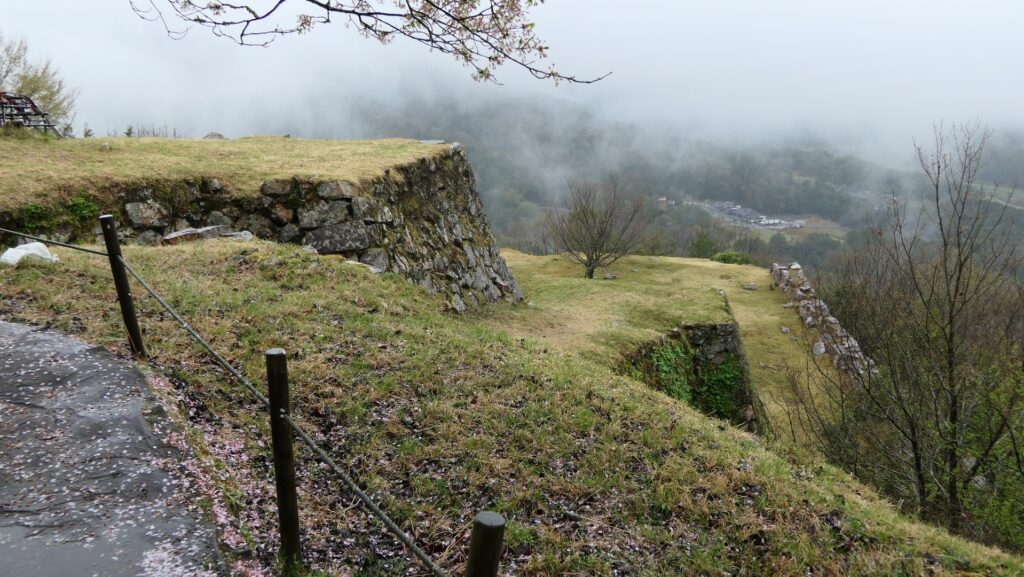

Therefore, you will go on the route to the southern ridge which has the narrow Southern Second Enclosure and the large Minami-Senjo or the Southern 1,000 mat Enclosure, similar to the northern ridge. If you look back to the center of the castle, you can see many great stone walls covering the top of the mountain. The view of the area around the mountain is magnificent.

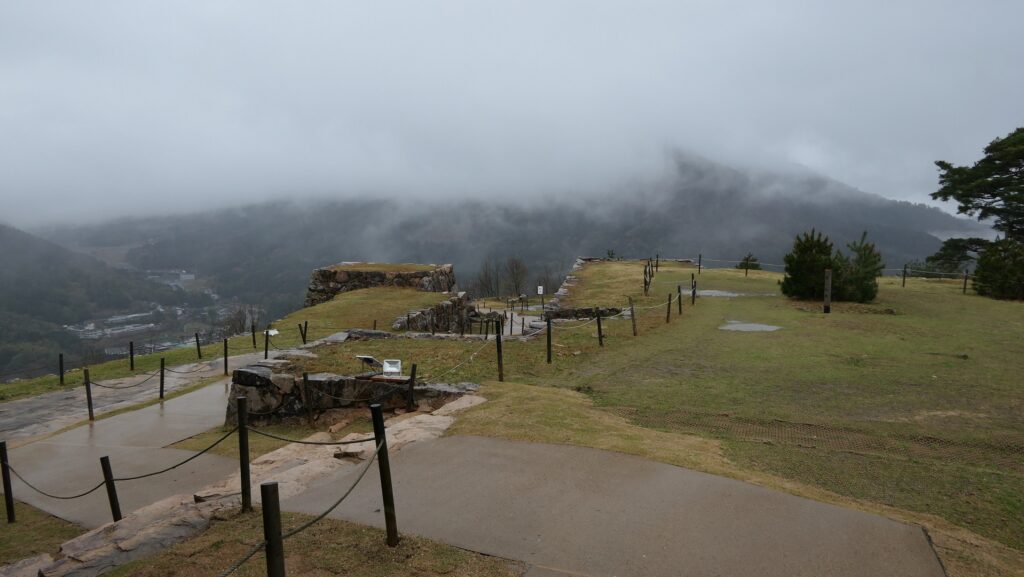
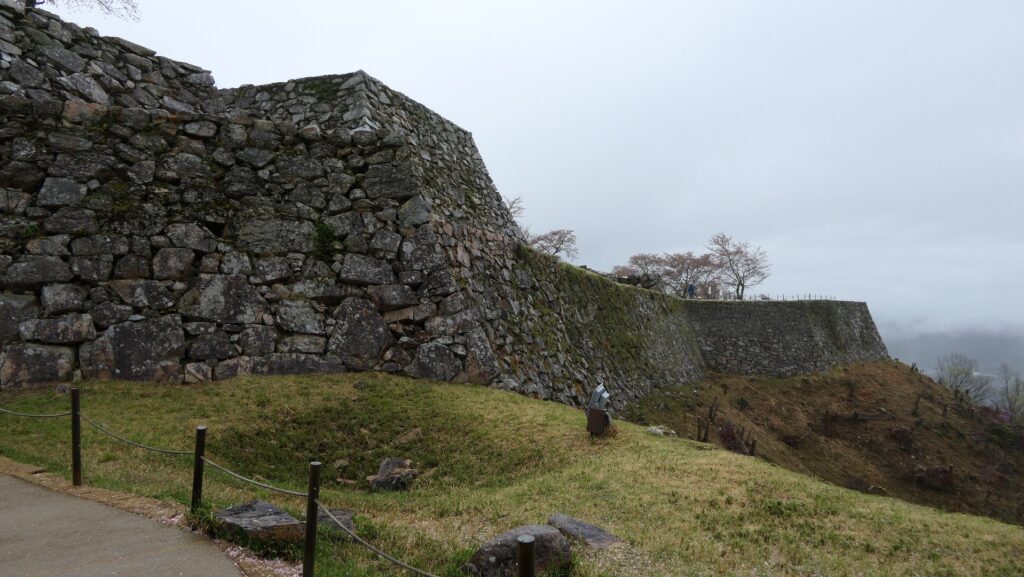
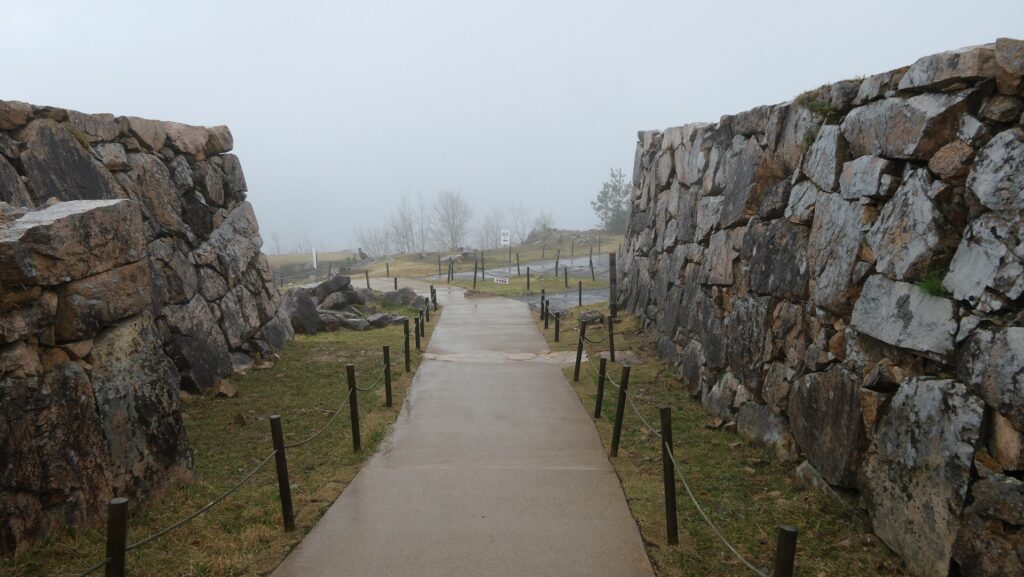
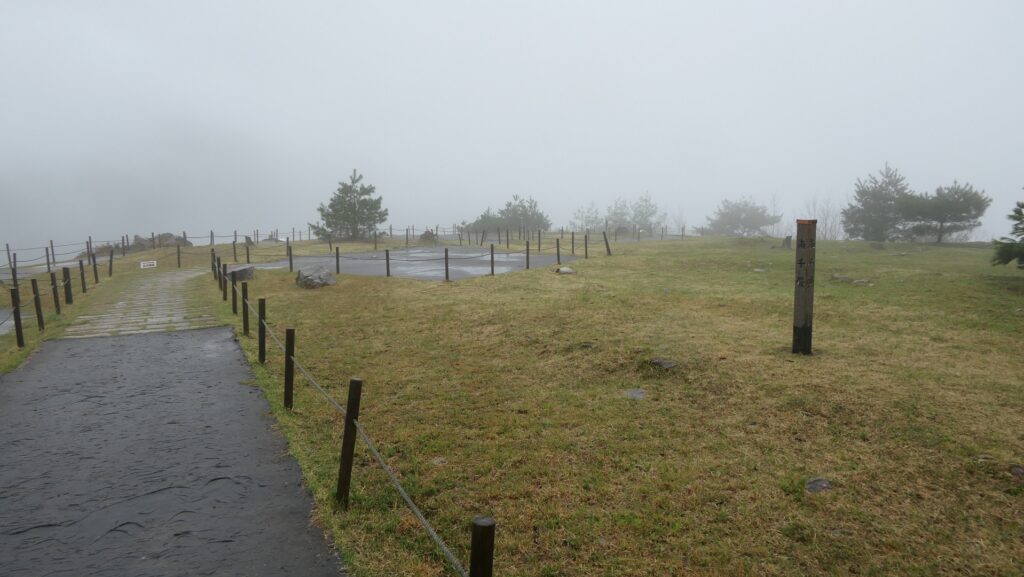
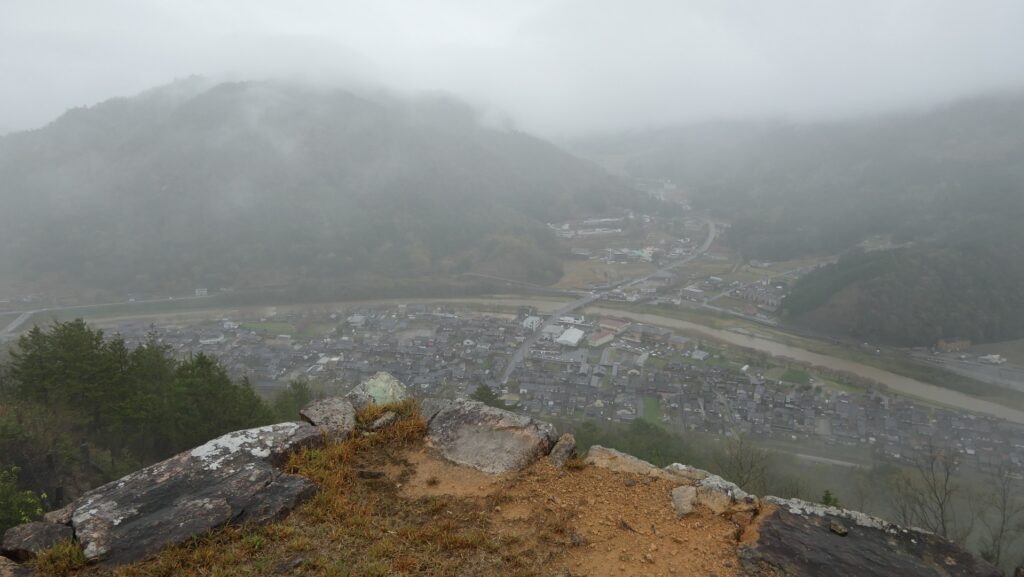
The return path goes from the edge of the ridge, which might have been the other entrance of the castle. You will finally return to the paved path which you have passed.
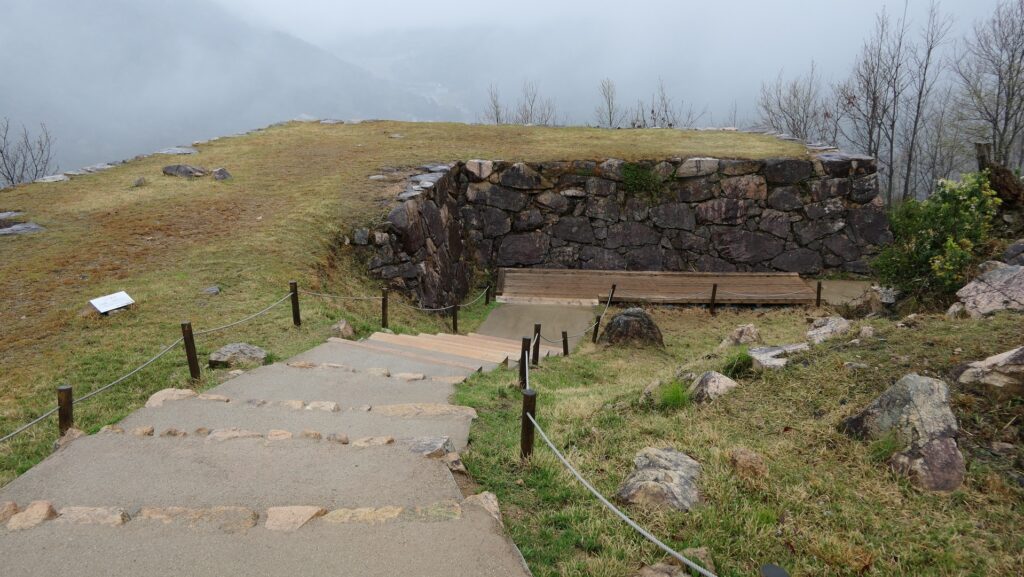



Later History
Takeda Castle was abandoned and all the castle buildings were demolished in the early Edo Period. However, the stone walls of the castle were left as there were, for some reasons. In other cases of abolished castles, their stone walls were also destroyed. The remaining stone walls of Takeda Castle may have been a miracle. The castle ruins were designated as a National Historic Site in 1943. Since then the ruins were sometimes used as the locations of historical movies that feature the intact stone walls of the castle. In 2007, a photographer, posted his photo of the Takeda Castle in the Sky, which won an award. This made the castle famous and the number of the visitors skyrocketed.
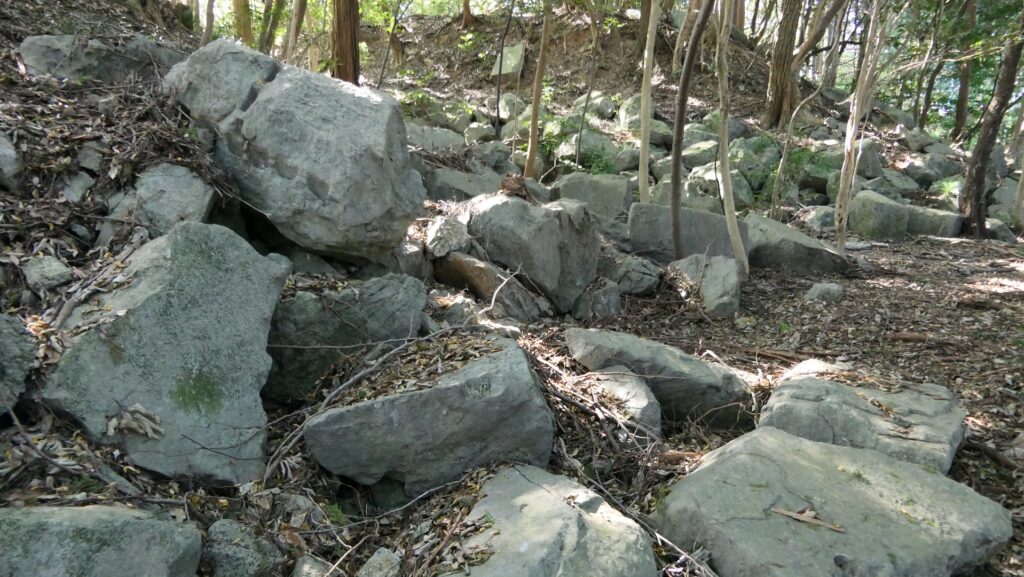


My Impression
Three things surprised me about the great stone walls of Takeda Castle three times. First, I was simply impressed to see the stone walls on the high mountain. I was wondering how and why the builders built them on such a steep place. I learned that the value of Takeda Castle for the rulers and what the builder, Masahiro Saimura did in the castle are parts of the answer. Secondly, I heard that local people make great efforts on maintaining the stone walls to preserve them and make sure visitors visit them safely. I also think the original layout of the castle even now helps visitors walk smoothly in the castle ruins. Finally, I can’t believe the stone walls have been left intact for over 400 years since the castle was abandoned. As far as I know, there is no other example of stone walls which are the same or similar to Takeda Castle. Although the stone walls have been often repaired and maintained. I still can’t understand why they have been intact for so long.
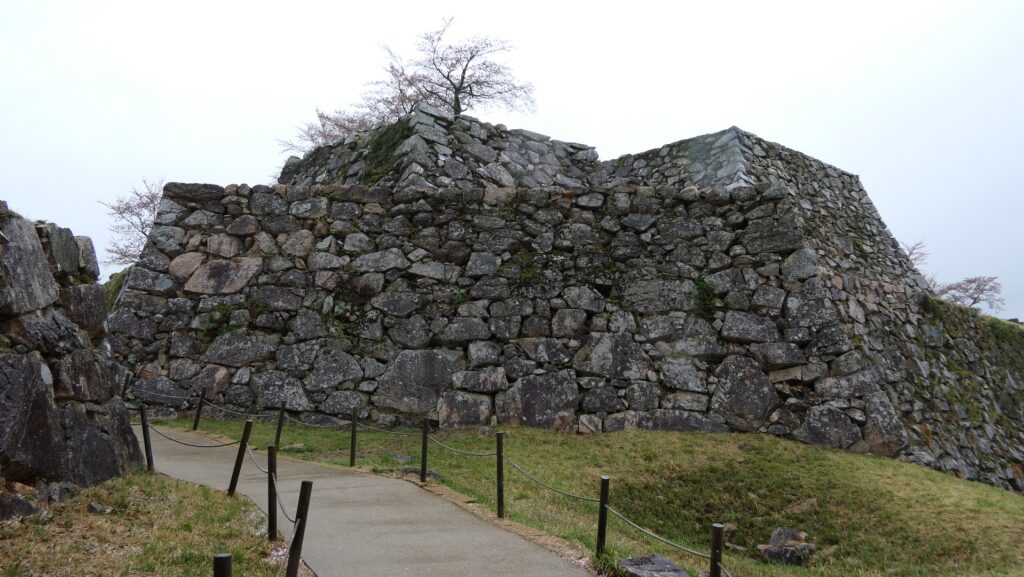
How to get There
If you want to get there by car, it is about 10 minutes from Wadayama IC on the Kitakinki-Toyooka Expressway. There is a parking lot at the tourist facility halfway up the mountain.
By public transportation, you can take the Tenku-bus from JR Takeda Station and get off at the final bus stop, Takeda-jo. The stop is over 1km away from the entrance of the castle ruins. Or it takes about 40 minutes on foot from the station to the entrance.
From Tokyo or Osaka to Takeda Station: take the Sanyo Shinkansen super express and transfer to the Bantan Line at Himeji Station.
That’s all. Thank you.
Back to “Takeda Castle Part1”
Back to “Takeda Castle Part2”

